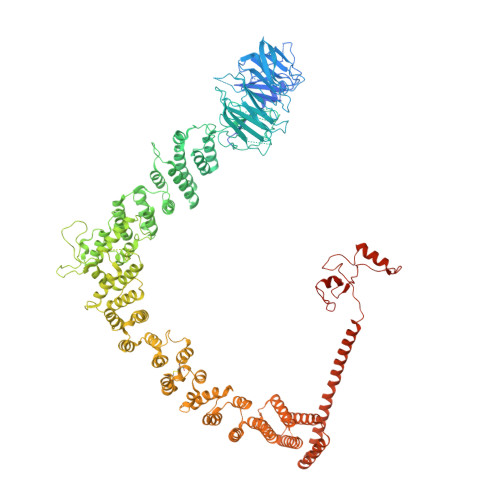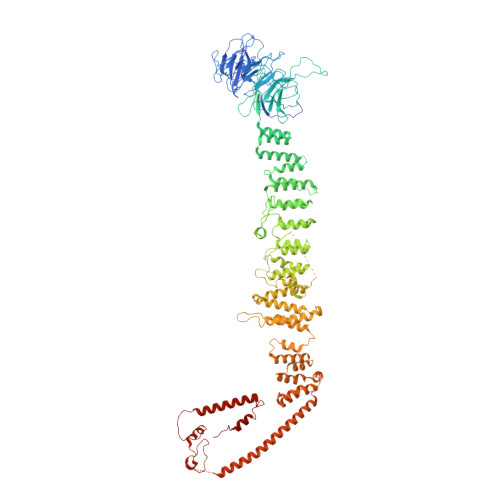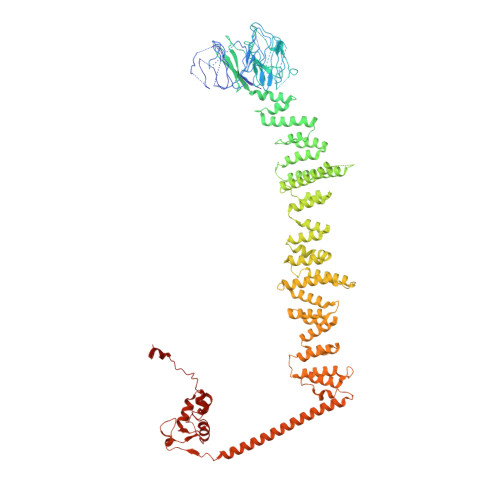Structure of the endosomal CORVET tethering complex.
Shvarev, D., Konig, C., Susan, N., Langemeyer, L., Walter, S., Perz, A., Frohlich, F., Ungermann, C., Moeller, A.(2024) Nat Commun 15: 5227-5227
- PubMed: 38898033
- DOI: https://doi.org/10.1038/s41467-024-49137-9
- Primary Citation of Related Structures:
7ZU0, 8QX8 - PubMed Abstract:
Cells depend on their endolysosomal system for nutrient uptake and downregulation of plasma membrane proteins. These processes rely on endosomal maturation, which requires multiple membrane fusion steps. Early endosome fusion is promoted by the Rab5 GTPase and its effector, the hexameric CORVET tethering complex, which is homologous to the lysosomal HOPS. How these related complexes recognize their specific target membranes remains entirely elusive. Here, we solve the structure of CORVET by cryo-electron microscopy and revealed its minimal requirements for membrane tethering. As expected, the core of CORVET and HOPS resembles each other. However, the function-defining subunits show marked structural differences. Notably, we discover that unlike HOPS, CORVET depends not only on Rab5 but also on phosphatidylinositol-3-phosphate (PI3P) and membrane lipid packing defects for tethering, implying that an organelle-specific membrane code enables fusion. Our data suggest that both shape and membrane interactions of CORVET and HOPS are conserved in metazoans, thus providing a paradigm how tethering complexes function.
Organizational Affiliation:
Department of Biology/Chemistry, Structural Biology Section, Osnabrück University, 49076, Osnabrück, Germany.



















